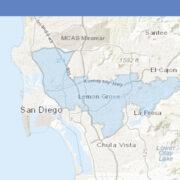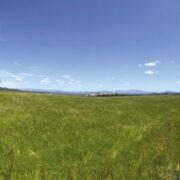THE MMDA and assorted kibitzers have come up with all kinds of solutions to the infernal Metro Manila traffic problem. The dancing traffic cops. The color coding idea. The U-turn idea. The bus ban idea. The flyovers and the underpasses. The LRT and MRT. But still the traffic mess remains.
I live in the San Francisco Bay Area and have to take the 1-80 freeway from the East Bay to my office in Daly City. Negotiating that stretch, which takes 30 minutes without traffic, can last for an interminable two hours. Yet, I’m talking about a traffic situation where the drivers are disciplined, there are car pool lanes that allow cars with at least three passengers to speed through, and traffic cops are hawk-eyed and don’t ask for bribes.
Is it any surprise that EDSA traffic is horrendous? Indeed, worsening traffic is as much a reality in this ever-modernizing world as global warming.
MMDA Chairman Francis Tolentino must surely know what’s making an already bad traffic situation far worse. It’s the total lack of discipline on the road. Buses blocking vehicles while squeezing in and out of bus stops. Motorists weaving from lane to lane. Jeepneys stopping in the middle of the road to unload and pick up passengers. Commuters waiting for their rides in the middle of the street.
So, is Tolentino mustering trained no-nonsense traffic enforcers to impose discipline on the road? Not on your life. In fact, his “solution” reminds me of the little moron who lost a coin and kept looking for it under a street lamp. Asked where he dropped the coin, he pointed to a spot a distance away.
“Then why are you looking for it here?”
“Because it’s well-lighted here. It’s dark out there,” the moron replied.
Like the moron looking for his lost coin under the street lamp, instead of where he dropped it, Tolentino avoids addressing the obvious problems and, instead, proposes a “solution” that would create another problem. He wants to expand the one-day color coding system to two days.
In Metro Manila, you can commit every conceivable traffic violation and the traffic enforcers will pay no attention. But, just try driving your car on the day that the plate number is not allowed on the street, and you will immediately be cited for a “color coding” violation.
And so, to fit the intellectual capacity of his simpleton traffic enforcers, Tolentino would like to expand the “color coding” system to two days. The only folks who seem to welcome this hare-brained idea are the jeepney drivers and the motorcyclists.
When the one-day color coding system was instituted, the wealthy simply bought extra cars. The average motorists had to make do with hitching a ride or taking public transport. The result: Millions lost in productive manhours. Now, Tolentino wants to double the loss.
Another “creative idea” of Tolentino, for which he reportedly used American Idol runner-up Jessica Sanchez for the pitch was the “Skybridge.” He would build a thoroughfare above the San Juan River, “stretching for 6.75 kilometers from E. Rodriguez Avenue in Quezon City to J. P. Rizal Street in Makati City” (according to a press release of MMDA).
If this were to be implemented, aside from costing “P8 billion to P10 billion,” according to the same news report, this would simply create a new under-the-bridge haven for squatters to build their hovels in. And, in spite of Tolentino’s optimism, you can say goodbye to any plans of cleaning the waterway over which the proposed span would be built. And you can imagine what the flood problems will be.
Assuming the money is available, why not use the funds, to develop a transport system using the Pasig River? That would stretch much longer than the 6.7 km. Skybridge and would probably cost less.
Back in the early 80’s, I actually concocted a plan around which I wove a speech that I ghost wrote for then Coast Guard head, Commodore Brillante Ochoco. He wanted something that “the press would pick up.” The idea of using a Pasig River version of First Lady Imelda Marcos’ Love Bus occurred to me, and so I proposed the Love Boat commuter system on the Pasig.
The press did write about the idea and, unbelievably, even the First Lady became interested in it. She sent for Ochoco to discuss it and he brought me along. However, after an initial meeting in Malacañang, I lost track of the project. Ochoco himself earned a second star and became Flag Officer in Command of the Philippine Navy. I suppose, he had more important things to attend to.
I believe a Pasig River commuter service was eventually launched but, for some reason, it encountered operational problems. At any rate, such a system may be more practical and easier to implement and will benefit more commuters than a Skybridge.
There are other options that could mitigate the traffic mess, without the disruption of a two-day color coding idea. For instance, one of the things that Metro Manilans may want to correct is the penchant for face-to-face meetings.
In the era of smart phones, instant digital communications and video conferencing, there really is no need for face-to-face meetings for which people are habitually late, anyway.
In truth, many of the things presented or discussed at these meetings could be attended to on the phone, via email or via Skype. That saves a lot of travel time, gas, parking fees, stress and potential heart attacks.
I myself service clients based in Manila and in Southern California from the comfort of my home or my office in Daly City, and we still manage to get good work done.
Talk about “creative” solutions that create new problems, back in the early 80’s, I proposed a plan that seemed to make sense – until it was partially implemented.
Paraphrasing Shakespeare, I observed that in Makati, “parking was such sweet sorrow” and I conjectured that this was because cars could park the whole day for free or for a small fee. I then suggested an adaptation of the Singapore system that makes driving into the central district an expensive proposition. But, along with that, I suggested building huge parking facilities outside the main Makati business district and a shuttle service that would bring commuters to their work places, the way passengers at US airports are shuttled from off-site parking lots to the terminals. And, to top it all, to discourage all-day parking, I suggested fees based on the length of time a car was parked,
What happened? Only the part about charging graduated parking fees was adopted. Not the off-site parking lots. Not the shuttle service. These days, parking in Makati or in any of the business districts or in the malls can drive you to poverty. It has also become a substantial profit center for mall operators. But the traffic mess remains.
Another idea I proposed some years back may still be viable: an Executive Limo-bus service that will shuttle residents of Alabang and the subdivisions south of Manila to the Makati, Fort Bonifacio and Ortigas business districts. The bus would be a huge air-conditioned facility packed with such amenities as a coffee service and breakfast, the day’s newspapers, wi-fi, TV and music fed via headsets. Even a masseuse and a nurse to make blood pressure readings. In other words, a mobile kapihan. The chauffeur-driven vehicles of the executives could simply follow their bosses to and from their official destinations.
For the home-bound trip, the bus would have card games and balut, serve cocktails, feature a Frank Sinatra type of sing-along led by a likable entertainer, and, oh yes, pretty Customer Relations Officers.
What I still haven’t figured out is a solution to the possible problems with the wives.
***
Email [email protected]




